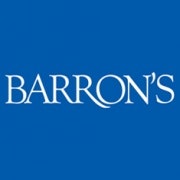Putting safety first in investing
| Summary: Wealth advisor Louise Gunderson, who manages a practice for super-rich families at investment bank UBS, says her clients are more risk-averse than ever before. And when it comes to investing their cash, it means putting their financial safety first as well as exploring offshore opportunities. |
| Key take-out: Gunderson’s typical account today is 55% stocks and 25% fixed income. The balance is in a category she refers to as satellite investments, a mix that includes private equity, long/short funds, cash, commodities, and go-anywhere funds. |
| Key beneficiaries: General investors. Category: Investment Portfolio Construction. |
When Chemical Bank asked Louise Gunderson to run its fledgling private-banking division in 1982, she thought she was being demoted. Private banking in the US hadn’t yet emerged as a sought-after club for the super-rich.
“In the ’80s, private banking was staffed by people not bad enough to fire, but not good enough to make it somewhere else,” says Gunderson, who had risen in the ranks at Chemical, since absorbed by JPMorgan Chase. But her superiors saw the opportunity in wooing the wealthy, and Gunderson ran with it. First she ran a lower-Manhattan retail branch before working for the bank’s corporate credit division. She eventually moved to a commercial Swiss bank called BSI, where she helped found its New York private-bank operations.
Today, Gunderson, 67, is approaching wealth management from yet another angle – running a financial advisory practice at UBS. Her seven-person team manages $700 million for about 200 families. While private banks tend to de-emphasise the advisor-client relationship – the client’s ties are more to the institution – Gunderson is copied on every e-mail between her team and her clients. “My friends are my clients, and my clients are my friends,” she likes to say.
The toughest move: Knowing when to sell “is the hardest thing in my view,” says Gunderson. Photo: Matthew Furman for Barron’s
Gunderson says that those clients “are more risk-averse than ever before in my career, and so we have to be keenly aware of that.” It’s a career that has spanned over 40 years. “You have to keep in mind what 2008 did to the fear of losing money,” she says. Her clients are also straddling more commitments. “People are living longer and so they are going to have to take care of their parents, and they are going to have to take care of their children. The baby boomers are in a whole different spot than our parents were years ago.”
Gunderson, who ranks No. 31 on Barron’s latest list of top 100 women advisors, is “guardedly optimistic” about the stockmarket. Her typical account today is 55% stocks and 25% fixed income. The balance is in a category she refers to as satellite investments, a mix that includes private equity, long/short funds, cash, commodities, and go-anywhere funds. One go-anywhere fund she uses is BlackRock’s Global Allocation fund. “Right now, they’re underperforming because they’ve got a lot of cash,” Gunderson says of the BlackRock fund. “I like that. It gives me my safety net.”
For her younger clients, she’s advising a push into global markets. “I think we have a good opportunity in Europe … Emerging markets is more of a challenge but a better long-term opportunity.”
International investing exposes clients to volatile currency movements. So, for Europe, Gunderson uses a WisdomTree ETF called the WisdomTree Europe Hedged Equity Fund. The stock fund tries to track European performance, while hedging against swings in the euro. Its top holdings include Anheuser-Busch InBev, based in Belgium, and Banco Bilbao Vizcaya Argentaria, Telefonica, and Banco Santander, all Spain-based.
On the fixed-income side, Gunderson has diversified her holdings into high-yield and international bonds, while also shortening their duration to protect against an eventual rise in interest rates.
Her satellite category includes more-opportunistic investments. One of her newer investments is a fund that tracks activist investors called 13D Activist. The portfolio is run by Kenneth Squire, who also contributes his research to a Barron’s weekly feature, The Activist Spotlight. Squire buys stocks in companies that are being pursued by activists like Carl Icahn and Bill Ackman.
Through the fund, investors can theoretically join in on the gains that activists seek to create. “They either go in there and take it over, or they are betting that somebody else is going to buy them out, or change management’s view. So we like that as another diversifying asset class,” Gunderson says. The fund, which was launched in December 2011, has a one-year return of 28.7%, versus 24.8% for the Standard & Poor’s 500, according to Morningstar.
As she interviews other potential fund managers, Gunderson always presses them on their sell discipline. “You’ve had a good run – now what do you do?” Gunderson asks. “People think when something is good, ‘I want that.’ And it could be at the very time it’s peaked.” So, knowing when to sell, she adds, “is the hardest thing in my view.”
With the stockmarket pushing ever higher, it’s also becoming the most important.
This article was first published in Barron’s, and is reproduced with permission.
















